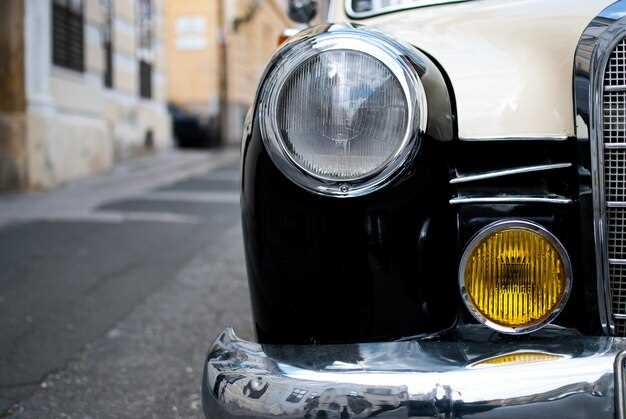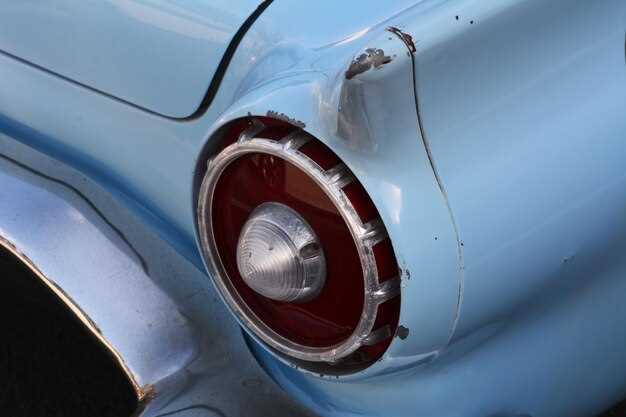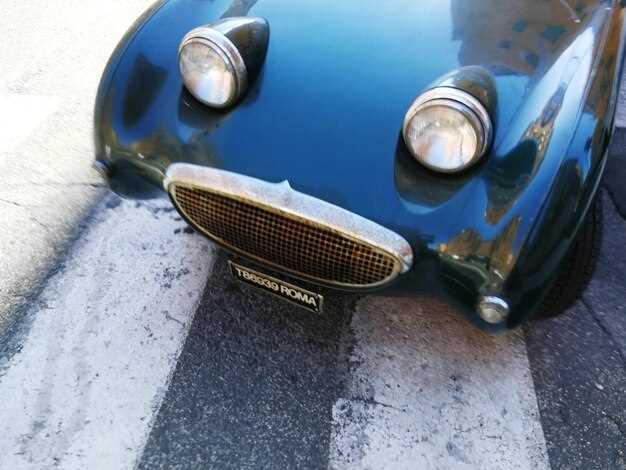
Owning a vintage car is not just a hobby; it is often a passion that requires careful consideration when it comes to insurance. Classic cars tend to hold their value over time, making them unique assets that require specialized coverage to protect against various risks. Therefore, understanding the details of a classic car insurance policy is crucial for any enthusiast looking to safeguard their prized possession.
Classic car insurance is distinctly different from standard auto insurance policies. Insurers recognize that vintage vehicles often have higher value due to their rarity, condition, and historical significance. As a result, the coverage options and requirements may vary significantly. Owners need to be aware of the specifics, including agreed value versus actual cash value, usage limitations, and the importance of maintaining precise documentation regarding the car’s condition and restoration history.
Additionally, many classic car insurance policies offer unique benefits tailored for vintage vehicles, such as coverage for parts and accessories, roadside assistance, and flexible mileage limitations. By grasping these elements, owners can better navigate the complexities of insuring a vintage car, ensuring they make informed decisions that will provide peace of mind and financial protection in the event of an unforeseen incident.
Evaluating Coverage Options for Vintage Cars
When selecting a policy for vintage cars, it is crucial to understand the specific coverage options tailored for classic vehicles. Traditional auto insurance may not adequately protect these unique assets, which often appreciate in value. Therefore, evaluating tailored insurance policies designed for vintage cars is essential.
Agreed Value vs. Actual Cash Value
One of the primary considerations involves deciding between agreed value and actual cash value coverage. Agreed value policies ensure that the car is insured for a pre-determined amount, protecting the owner’s investment in case of a total loss. On the other hand, actual cash value policies consider depreciation, which may not fully compensate for the car’s worth.
Specialized Coverage Features
Many insurance companies offering classic car policies include additional features. These might encompass roadside assistance, spare parts coverage, and coverage for restoration processes. It’s crucial to review these options to ensure the policy aligns with the specific needs of vintage car enthusiasts.
Usage Limitations
It’s common for vintage car insurance policies to have restrictions on usage. For instance, some may only permit limited mileage or require the vehicle to be used for shows, exhibitions, or parades rather than daily driving. Understanding these limitations is vital for ensuring compliance and avoiding potential claims denials.
Insuring Modifications
If the vintage car has undergone modifications or restorations, it is essential to inform the insurance provider. Some policies cover only the original condition of the vehicle, while others may provide coverage for enhancements that increase the car’s value. Clearly documenting these changes can aid in securing the appropriate coverage.
In conclusion, adequately evaluating coverage options for vintage cars requires a comprehensive understanding of the available policy types, features, and limitations. By doing so, car owners can ensure that their classic vehicles are protected, preserving their value and providing peace of mind.
Key Differences Between Classic and Standard Auto Insurance Policies

Classic auto insurance policies are specifically designed for vehicles that are considered vintage or collectable, typically aged 15 years or older. In contrast, standard auto insurance policies cater to everyday vehicles used for regular transportation. This fundamental difference establishes varying coverage details and requirements.
One of the primary distinctions is in the valuation method. Classic car insurance policies often utilize agreed value coverage, which means the policyholder and the insurer agree on the vehicle’s worth at the policy’s inception. In contrast, standard policies usually offer actual cash value coverage, which factors in depreciation to determine a vehicle’s worth at the time of a claim.
Coverage limits also differ significantly. Classic car insurance typically includes specialized coverage options such as spare parts replacement, show or exhibition coverage, and coverage while attending car shows or events. Standard auto insurance policies generally provide more generic coverage, focusing primarily on liability, collision, and comprehensive protections without the intricate details tailored to classic vehicles.
Furthermore, the usage of the vehicle plays a crucial role. Classic car insurance policies often impose mileage restrictions, reflecting their intended use as leisure vehicles rather than daily drivers. Standard auto insurance permits higher mileage allowances, accommodating the daily commuting needs of typical vehicles.
Lastly, premiums and deductibles differ markedly between these two types of policies. Classic car insurance premiums can be lower due to lower mileage and limited use, while standard policies may have higher premiums reflecting the vehicle’s everyday usage risk. Deductibles can also vary, as classic car policies may have lower deductibles for specific coverage options compared to standard policies.
Factors Influencing Classic Car Insurance Premiums

When it comes to insuring vintage automobiles, several factors can significantly impact the premiums you will pay. Understanding these aspects is crucial for both new and experienced classic car enthusiasts.
Vehicle Age and Condition: The age of a classic car plays a pivotal role in determining insurance premiums. Older vehicles often qualify for vintage status, which can lower the cost of insurance. However, the condition of the car, including restoration status, also affects premiums. A well-maintained classic typically attracts lower rates compared to one that requires extensive repairs.
Vehicle Type and Usage: The type of classic car (e.g., sports car, muscle car, or classic truck) influences the risk associated with insuring it. Cars that are more prone to theft or accidents may incur higher premiums. Additionally, how often and for what purpose the vehicle is used–whether for leisure drives or show events–can impact insurance costs as well.
Driver’s Profile: The driving history and profile of the vehicle owner are critical. Insurers evaluate factors such as age, driving experience, and any past claims. A driver with a clean record will likely receive a more favorable premium than one with multiple incidents.
Coverage Type and Limits: The chosen coverage options will also dictate premium amounts. Comprehensive classic car insurance often includes higher coverage limits and specialized protections, which inevitably leads to increased costs. Conversely, opting for basic liability might reduce premiums but come with increased risk.
Storage and Security Measures: Where and how a classic car is stored significantly affects insurance rates. Vehicles kept in a secure garage or facility often qualify for lower premiums due to reduced risk of theft or damage. Implementing additional security features, such as tracking systems or alarms, can further enhance safety and lower insurance costs.
Understanding these factors can help owners make informed decisions when selecting a policy, ensuring they get the best coverage at a competitive rate while preserving the value of their vintage investment.











